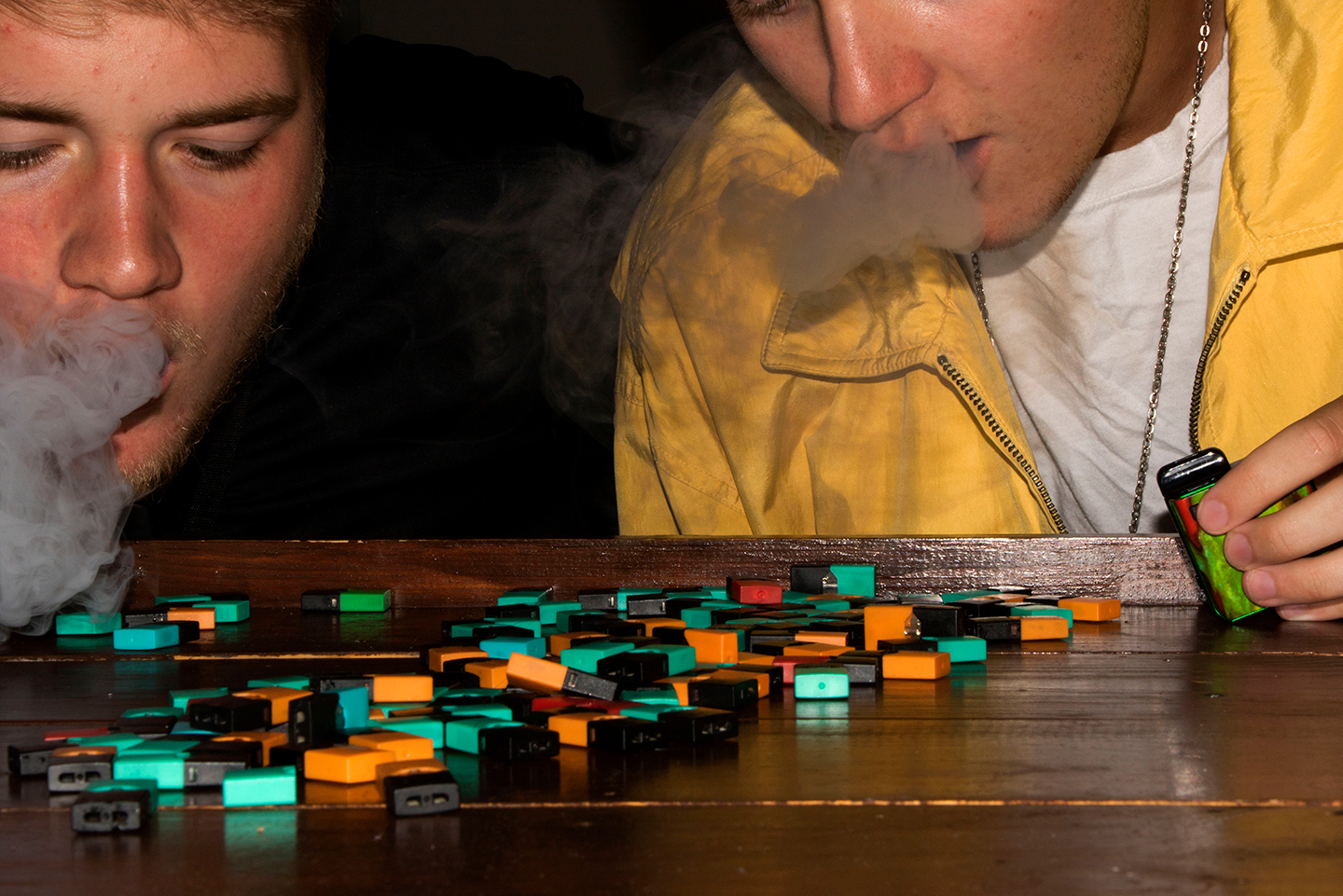
Smoking vs. vaping at USD: an old habit with a new face
Nov. 17, 1992, marked a new era for USD students: the banishment of smoking on campus inside USD buildings. This summer, USD and the South Dakota Board of Regents updated the policy to ban the use of e-cigarettes and vapes on campus.
In 1992, smoking was at the forefront of ridicule and renouncement as the medical community started discovering it’s dangerous repercussions. According to the Nation Center for Disease Control, “in 1990, an estimated 89.9 million U.S. adults were ever smokers, and 45.8 million were current smokers.”
Fast forward 27 years and the vaping habit is no different. According to the World Health Organization, “The number of vapers has been increasing rapidly – from about seven million in 2011 to 41 million in 2018,” and in 2019, there is no doubt that the number of vapers has increased.
Vaping and its effect on health is a hot topic across the U.S. and USD. With the Trump administration moving to ban flavored e-cigarettes, hundreds of cases of injuries and even deaths related to vaping have surfaced. Issues, like whether smoking or vaping is more harmful, or the extent of vaping’s side effects, is in still in discussion though the harms of nicotine have not changed in the last three decades.
“Vaping and e-cigarette use does not have the negative stigma of combustible smoking,” said Susan Strobel, an assistant professor of public health at USD. “There is not stinky smoke, no bad breath, no yellow fingernails.”
Smoking cigarettes has lost traction with the new generation, but nicotine and the appeal of vape products like Juuls draw in the younger audiences in Strobel’s opinion.
“Many of the youth who vape fruit flavored cartridges have a misunderstanding about the dose of nicotine they are getting,” Strobel said.
While the national number of nicotine users are steep, some numbers hit closer to campus. In a survey conducted by the American College Health Association, “only 12.9% of college students said they had used an E-cigarette in the past 30 days. When that same survey asked students the percentage of their peers they perceived had smoked in the past 30 days, though, that number jumped up to 79.9%.”
Hypothetically, if that ratio was true to the 9,920 students enrolled at USD, 7,926 have vaped in the past 30 days though no studies or surveys have been conducted to reflect that number.
“I don’t think these facts are surprising. Finding smokes online is quite easy and thus people smoke/vape all over on campus and I don’t see that coming to an end anytime soon,” said Regan Quick, a junior nursing major.
Smoking may not be as popular as it was in the 90s, but it shares some of the same negative effects as vaping, Strobel said.
“Nicotine has a negative impact on adolescent brain development, which can cause problems with learning and memory, as well as long-term behavioral impairments including depression, anxiety, and mood disorders,” Strobel said.
Although adolescence isn’t directly associated with college students, the human brain does not fully mature until the age of 25, meaning the use of nicotine still affects college students on a deep physical level, according to the University of Rochester Medical Center.
Since the banishment in 1992, USD has been a smoke-free campus, but it is hard to say it is completely nicotine-free, Strobel said.
“What we did not anticipate, is how vapor nicotine products would be so appealing to the youth and we did not anticipate how readily accessible these products would be,” Strobel said.


